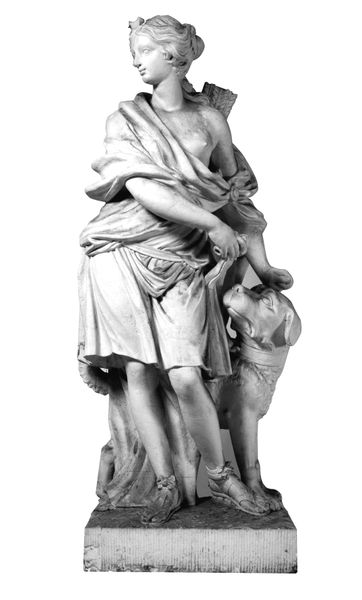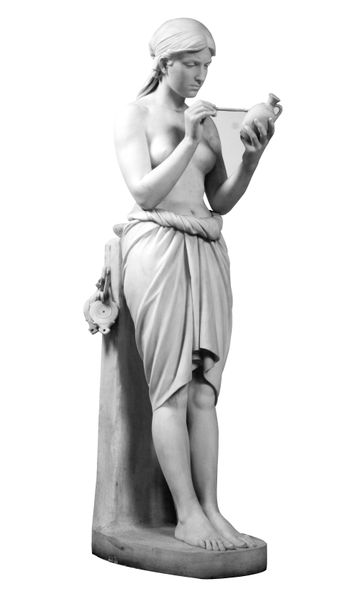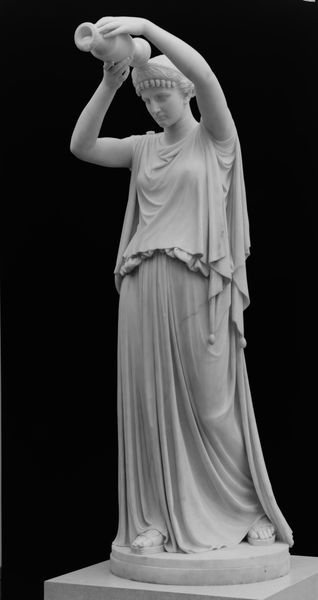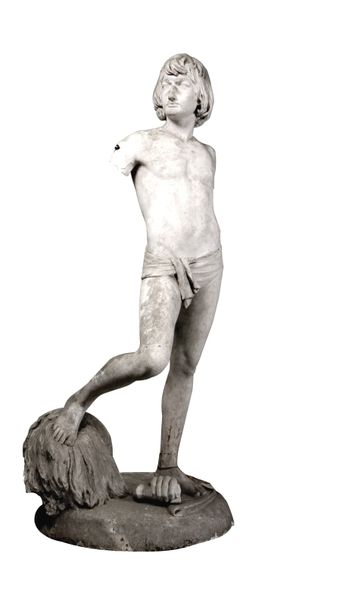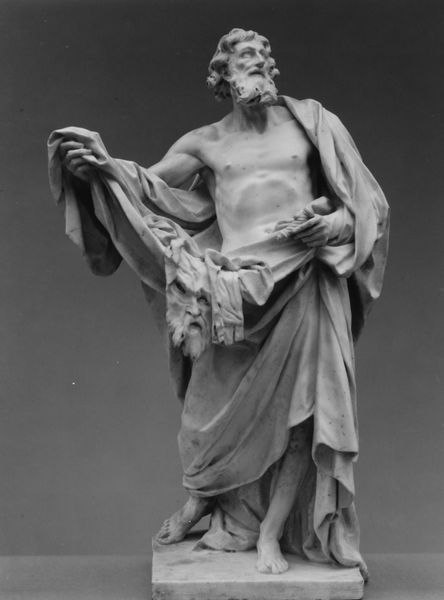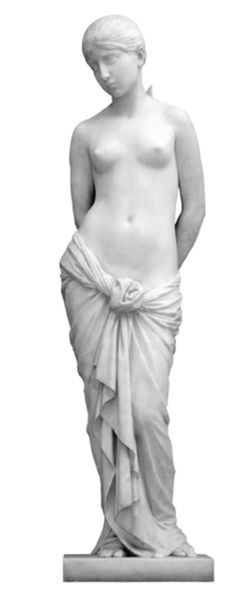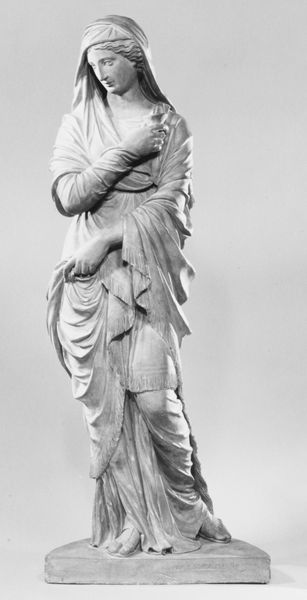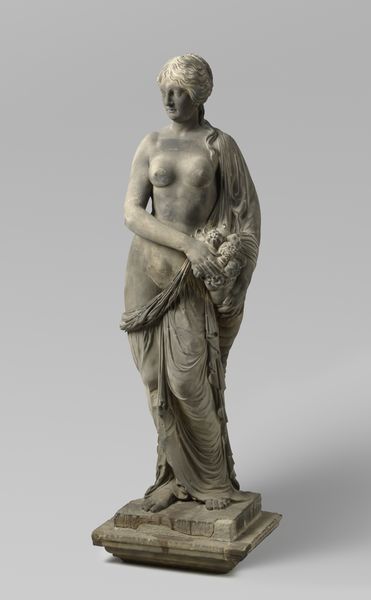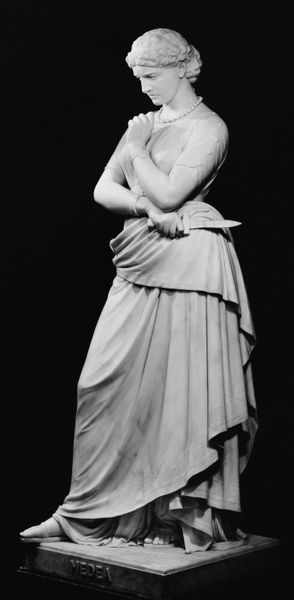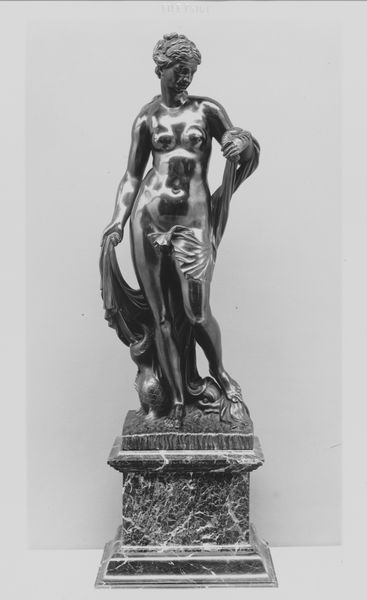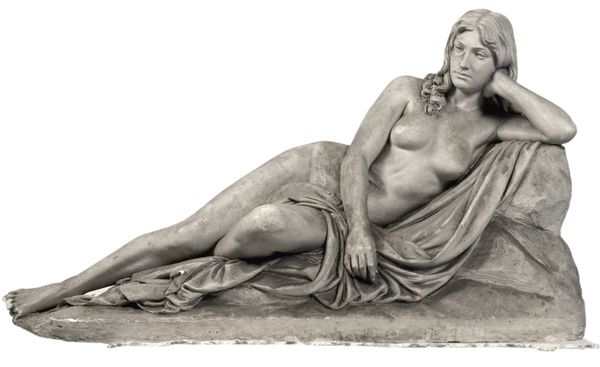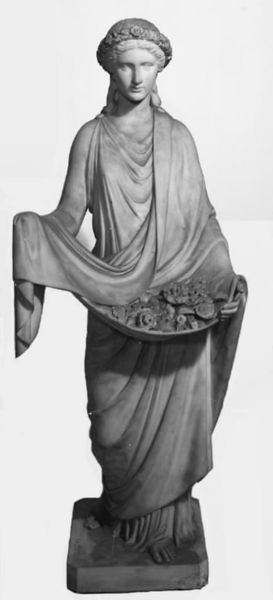
En sovende høstpige. Halvnøgen ung kvinde, liggende med hovedet hvilende på et kornneg 1852
0:00
0:00
sculpture, marble
#
neoclacissism
#
sculpture
#
landscape
#
classical-realism
#
figuration
#
sculpture
#
academic-art
#
marble
#
nude
#
realism
Dimensions: 49.3 cm (height) x 161.5 cm (width) x 72.4 cm (depth) (Netto)
Curator: Looking at this piece, the first thing that strikes me is this profound sense of tranquility, a quiet stillness that just washes over you. What’s your impression? Editor: It’s certainly lovely, although perhaps a touch sentimental for our modern tastes. It’s actually a marble sculpture, completed in 1852 by J.A. Jerichau. The museum titles it “A Sleeping Autumn Girl”. Curator: Sentimental, yes, but also really telling. The sculpture idealizes rural labor, doesn't it? There she is, half-nude, but somehow still pure, dreaming amidst the bounty she helped create. Editor: Absolutely, it speaks volumes about the artistic climate of mid-19th century. The Classical Realism movement was really fixated on presenting idealized versions of life, almost like moral lessons cast in stone, right? Curator: Indeed. There’s a deliberate attempt here to sanitize reality, focusing on aesthetic beauty over the hardships of agricultural life. And it aligns with the art world being so institutionalized. Art academies of the time are shaping tastes. What kind of patron wanted to project this image? Editor: Right! Like, the art world—the market—becomes the great stage on which these cultural ideals play out, very often reaffirming established values rather than challenging them. Do you find that’s always the case? Curator: Not always, thankfully! But pieces like this certainly provide a valuable window into the power structures influencing artistic production back then, wouldn’t you say? Editor: Totally. Now, I find myself wanting to dive deeper into who Jerichau was and the kind of statement he was trying to make with his art, so that alone feels like a little victory for today. Curator: Indeed. The role of the artwork remains central. We look at it to understand our human story, to understand ourselves.
Comments
No comments
Be the first to comment and join the conversation on the ultimate creative platform.
